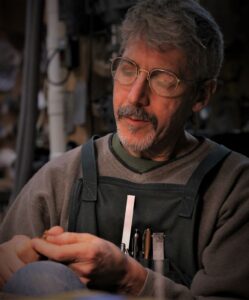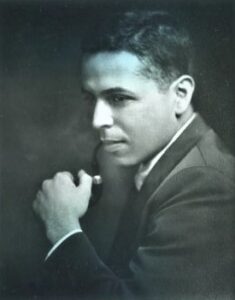David Finck ⩙ Luthier
Making Violins and Violas
David Finck
My career as a lut hier making violins, violas, and cellos is built on the musical and artistic influences from my family that came before, and from my own daughters. It is anchored by a lifetime of dedication to making fine instruments and fine furniture. If you are interested in the longer story, there’s more below and even a little documentary. Here’s the summary:
hier making violins, violas, and cellos is built on the musical and artistic influences from my family that came before, and from my own daughters. It is anchored by a lifetime of dedication to making fine instruments and fine furniture. If you are interested in the longer story, there’s more below and even a little documentary. Here’s the summary:
Instrument building came my way while I was still in college in 1983. I built a classical guitar and knew I had discovered a passion for fine woodworking. In 1984 I began two years of training under James Krenov at his internationally recognized fine-woodworking school and then established my business building acoustic guitars and designing and building fine furniture. You can see what that was about here.
I built my first violin in 2012. The experience was transformative and the success was immediate. Since then, my focus has been on creating concert-quality violins, violas, and cellos. They have been purchased and are played by professional musicians, advanced students, and dedicated amateurs. I would love to connect with you and help conclude your search.
The Longer Story
Creativity and artistry thread through my family history. One grandmother was a conservatory-trained pianist in czarist Russia during the revolution, the other a talented sculptor. My grandfather was a leading director in Yiddish theater in Baltimore; my mother is an artist and a poet. Both of my sisters are musicians and creative souls.
Henry Finck, my father, was a craftsman in leather, weaving, and wood. He began violin studies at thirteen (a girl in his school orchestra was involved in that pursuit). By then he was already a precocious woodworker with an entrepreneurial bent. He had purchased an industrial jigsaw and started reproducing gingerbread trim for Victorian homes in his Baltimore neighborhood. His woodworking and musical interests combined when he made the ambitious decision to one day build a violin.
He began violin studies at thirteen (a girl in his school orchestra was involved in that pursuit). By then he was already a precocious woodworker with an entrepreneurial bent. He had purchased an industrial jigsaw and started reproducing gingerbread trim for Victorian homes in his Baltimore neighborhood. His woodworking and musical interests combined when he made the ambitious decision to one day build a violin.
I was ten when my father began planning his violin building quest. I was puzzled when he told me he would first build a guitar, then a viol da gamba, and then, finally, like an assault on Everest, the violin. Why not just build the violin, I wondered? Of course, I didn’t grasp the benefit of building skill upon skill that this sequence offered. Progress was slow, however. My father had a lot on his plate with three children and a day-job as a professor of anatomy at the University of Pittsburgh. In time, the guitar was built, but the viol da gamba was only half-completed at the time of his death, and the violin was a dream never realized…
In high school I took up playing guitar and I nagged my dad quite a bit to finish the one he had started making. One summer, applying a bit of “child psychology,” I set about building a guitar myself with the hope that he might be spurred to complete his own. It never occurred to me that I would actually finish my project, ignite a passion for fine woodworking, and discover a career path, but all of those things came about. It would still be a while longer before my dad’s guitar was finished.
 Advance two decades into the future and I was now a husband with a wife and two young daughters. I was the primary child-caregiver and running short of ideas on how to spend time with the little ones. One day I came across the name of a woman offering Suzuki violin lessons to very young children. This intrigued me, so I took my daughters, ages 2 and 4, to “Miss Nan” (Nan Stricklen) for their first lesson. The girls have never put down their fiddles. That was in 1999. Now they are grown and playing professionally. (Ledah, Willa)
Advance two decades into the future and I was now a husband with a wife and two young daughters. I was the primary child-caregiver and running short of ideas on how to spend time with the little ones. One day I came across the name of a woman offering Suzuki violin lessons to very young children. This intrigued me, so I took my daughters, ages 2 and 4, to “Miss Nan” (Nan Stricklen) for their first lesson. The girls have never put down their fiddles. That was in 1999. Now they are grown and playing professionally. (Ledah, Willa)
After my father died I was struck with the notion that I ought to build a violin. His unfinished viol da gamba and his unfinished dream were urging me on. I also had two daughters each in need of better instruments. Bolstered by a lifetime of woodworking skills, several feet of bookshelf dedicated to all aspects of the violin, most of the necessary tools, and some choice wood, I decided that the time was ripe to begin. And so I did.
that I ought to build a violin. His unfinished viol da gamba and his unfinished dream were urging me on. I also had two daughters each in need of better instruments. Bolstered by a lifetime of woodworking skills, several feet of bookshelf dedicated to all aspects of the violin, most of the necessary tools, and some choice wood, I decided that the time was ripe to begin. And so I did.
As that first violin took shape it hit me with the deepest certainty that I had come across my calling. I felt completely at home every step of the way. Now, as I begin carving a violin I think of the dreams of my father, and although I miss him greatly, I am comforted remembering him this way, and I often smile and silently thank him for propelling me along this beautiful path.
I am honored that Ledah and Willa still play my first two violins as their primary instruments — I dubbed the instruments “Gelibt” (beloved) and “Neshomeh” (soul), in honor of my father.
This story could never be complete without acknowledging the unwavering support of my wife, Marie Hoepfl.
The Video
An ode to the influence of family generations by documentarians Anne Ward and Chip Williams.
